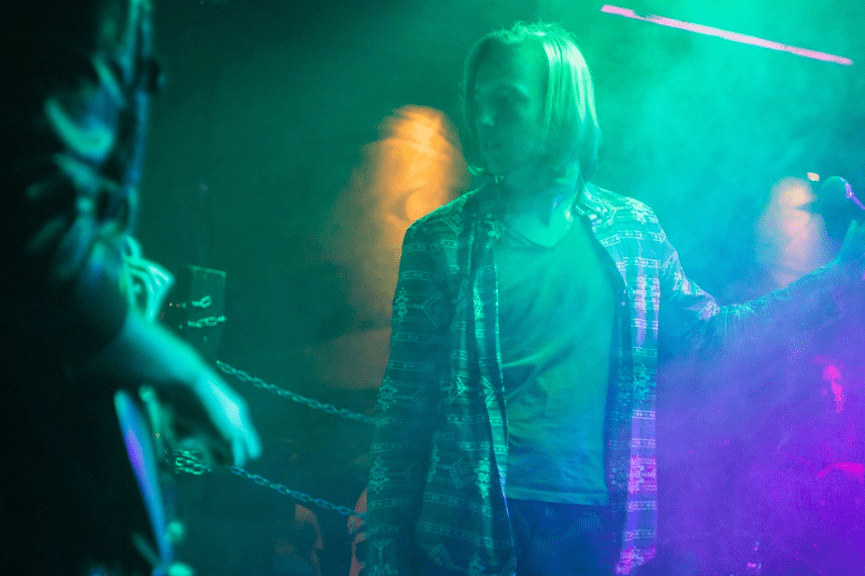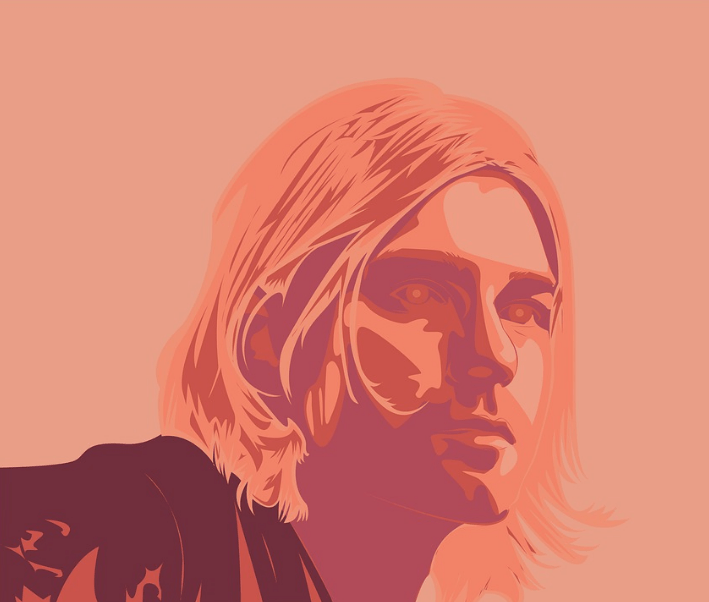If you ask people what they think is the most popular rock band in the 90s, most of them will tell you that it is Nirvana. This Seattle-based band, which consists of vocalist and guitarist Kurt Cobain, bassist Krist Novoselic, and their longest-tenured drummer Dave Grohl, is regarded as the spearhead of the grunge movement, a period in music history wherein distorted electric guitar sounds, noisy backing tracks, and almost incoherent vocals and chord progressions are quite popular. However, despite the “shrewdness” of grunge music, the songs in the genre would often have lyrics with deep meanings and sounds with relative complexity.
While grunge rock had already existed even before Nirvana received a boom in popularity during the 90s, the Cobain-led band is still considered one of the pioneers of the genre. Nirvana was a short-lived band due to unfortunate circumstances surrounding Cobain, but their albums and songs are still being listened to and admired by millions of their loyal fans and even the younger people that never saw their glory days. To know more about the band, here is an artist profile for Nirvana.
Nirvana’s Early Years
Kurt Cobain and Krist Novoselic first met when they were students in Aberdeen High School, an institution found in Washington State. Novoselic and Cobain became close friends after meeting several times at the practice space of the Melvins, a rock band that was one of the few that created the grunge rock genre. Inspired by the Melvins, Cobain expressed interest to form a band with Novoselic, but Novoselic refused. Two years later, to convince Novoselic to form a band with him again, Kurt Cobain sent his friend a demo tape that contains some of the songs that he has worked on for his project called Fecal Matter. Impressed by the demo, Novoselic finally agreed to form a band with Cobain.
The first official band that they formed was called the Sellouts, which was a tribute band that performs Creedence Clearwater Revival covers. For drumming duties, they recruited Bob McFadden, but after a few months, the band disbanded. However, Cobain and Novoselic did not give up, as they will soon form another band that will eventually be called Nirvana.
For Nirvana, Cobain and Novoselic hired Aaron Burckhard as their first drummer in 1987. However, while moving to Tacoma, Olympia, and back to Washington, the founders of the band lost contact with Burckhard. So, they had no choice but to replace him with another drummer named Dale Crover, who was the former drummer of the Melvins. Unfortunately, Crover also left the band in early 1988, but he recommended his friend Dave Foster as his replacement. Foster would also not last long with the band, as he would soon be arrested by the police due to unclarified reasons. Foster was then replaced by Burckhard, who returned but would eventually leave the band once again after he told Cobain that he was too hungover to practice. A mutual friend of Cobain and Novoselic would later introduce them to Chad Channing, who would later play with the band for the first time in May 1988. Channing would be the second-longest tenured drummer after Grohl.
Bleach and Recruitment of Dave Grohl
The first official single of Nirvana was released in November 1988 through the independent record label called Sub Pop, and it was a cover of “Love Buzz” by Dutch rock band Shocking Blue. In December 1988, Nirvana would start recording songs for what would be their debut album. To help them perfect the sound of their recordings, they hired Jack Endino as their producer. The debut album, which they called “Bleach,” was released in June 1989, and because of the growing grunge movement in Washington during that time, the album became a hit amongst teenagers and college radio stations.
Even though Sub Pop did not promote the album well, “Bleach” still became quite popular in the state. A few months after, Nirvana recorded the extended play or EP “Blew” with producer Steve Fisk. In April 1990, the band started to write and record songs for their follow-up album to “Bleach” under producer Butch Vig and Smart Studios, a recording studio in Madison, Wisconsin. During the recording sessions, Cobain and Novoselic expressed dissatisfaction with Channing’s drumming skills, and Channing also became frustrated with the other band members for not involving him during the songwriting process. Due to the tension between Cobain and Channing, the latter eventually left the band. Around the same year, Dale Crover returned to serve as a session drummer for the band’s West Coast tour with Sonic Youth.
Buzz Osborne, another member of the Melvins, introduced drummer Dave Grohl to Cobain and Novoselic in September 1990. Dave Grohl, who played drums from the then-recently defunct band Scream, auditioned for a drumming role in Nirvana. According to Novoselic, they already knew that Grohl was the perfect drummer for Nirvana in just two minutes of Grohl’s audition.
With the addition of Dave Grohl, it could be said that Nirvana became a much better band overall, as their rhythm became tighter while still being aggressive. To know more about other bands that became better after having a new drummer, you can read our article, Bands that Became Better with New Drummers.
Nevermind and Mainstream Success
Growing distrustful because of the poor management of Sub Pop, Kurt Cobain decided to find a major record label that would help them promote their music better. To have a better idea on signing better deals, they consulted the longtime manager of Alice in Chain and Soundgarden, Susan Silver. The manager would then introduce the band to agent Don Muller and attorney Alan Mitz, whose specialty is finding great deals for new artists and bands. Eventually, Nirvana would officially sign to DGC Records in 1990, after Sonic Youth bassist Kim Gordon’s recommendation.
After they have signed to a major label, Nirvana resumed the recording sessions for their second album. DGC Records recommended many producers that can help them create the album, but Nirvana stuck with Butch Vig as their producer. However, instead of recording in Vig’s studio, they decided to record in a better studio called Sound City Studios in Los Angeles. After the recording sessions were finished, the members of Nirvana felt dissatisfied with the overall sound of the album. So, Andy Wallace, who was known as the frequent mixer for thrash metal band Slayer, was hired to create the final mix. After the release of the second album, which was called “Nevermind,” on September 24, 1991, Nirvana expressed that they did not like the final mix of the songs, as they thought that it was too polished for grunge rock.
Despite the fact that Nirvana didn’t like the final mix of the album, Nevermind would become their most popular album, as it launched them to instant stardom when they released the album’s first single, “Smells Like Teen Spirit.” DGC Records only hoped that Nevermind would sell 250,000 copies in total, but to the company’s surprise, it sold more than seven million copies in the United States and more than 30 million copies in different countries around the world.
Due to exhaustion brought by their sudden popularity and constant live performances, Nirvana did not embark on a tour that will promote their second album. However, they did perform in a few live shows from 1991 to 1992. Around the time of their break, Cobain sought to change their agreement regarding songwriting royalties, which was originally split equally for all of the members. According to reports, Cobain wanted to have a majority of the royalties, as he believes that the songs are mainly written by them, and the other members are just filling in for particular sections and additional sounds.
At first, Novoselic and Grohl did not object, but upon learning that Cobain also wanted to get most of the royalties for Nevermind, the two other members of the band began being frustrated at Cobain and his actions. Because of the growing tension, Nirvana almost split up during that time, but the members eventually reached an agreement where Cobain will get 3/4 of the royalties. Even though they agreed to the deal, both Novoselic and Grohl still had bad feelings towards Cobain over the matter.
In Utero and Cobain’s Unexpected Death
After being pressured by DGC records to record and release the band’s third album, Nirvana began recording new songs under producer Steve Albini, who was known back then as an opinionated personality about the alternative, grunge, and indie music scene. Because of their dissatisfaction with the sound of the previous album, Nirvana chose to hire Albini because he has a natural recording style and doesn’t really tamper much with initial recordings. In just two weeks, Nirvana finished the recording sessions at Pachyderm Studio in Cannon Falls, Minnesota, in February 1993.
Once Nirvana sent the recordings of the album to DGC, there have been many speculations in the media that DGC deemed the album to be “unreleasable” because it has a different sound from Nevermind. However, trusted sources proved that the rumor was untrue. Unfortunately, Nirvana didn’t like the final mix for the third album since they thought that the volume of the bass is too low. Two songs on the album, “All Apologies” and “Heart-Shaped Box,” were remixed by producer Scott Litt in order for Cobain to make the songs “perfect.”
The third album, called “In Utero,” was officially released on September 13, 1993, and was received with massive critical and commercial success. The album would soon sell more than 5 million copies in the United States alone. To support the release of In Utero, Nirvana scheduled their first US tour. To make their live sound more complete, Cobain hired former Germs guitarist Pat Smear as the second guitarist of the band.
In November 1993, Nirvana performed for the popular television program “MTV Unplugged,” where artists and bands would perform acoustic versions of their famous songs. However, instead of playing “Smells Like Teen Spirit” and their other well-known tracks, Nirvana decided to perform their least popular songs and some covers.
The following year, Nirvana would then be scheduled to go on a European tour. The final concert for the tour happened in Munich, Germany, on March 1, and this performance would serve as the last one for both Nirvana and Kurt Cobain. Three days after the Munich concert, Courtney Love, Cobain’s wife, found the vocalist unconscious in their hotel room in Rome. Cobain was then rushed to the hospital, where doctors found out that Cobain’s body had reacted to a combination of alcohol and Rohypnol, a drug prescribed to Cobain to treat insomnia.
Because of the incident, the rest of the European tour was canceled, and Nirvana was forced to go on a break to let Cobain recover. However, Cobain didn’t recover well, as his addiction to heroin would later resurface. Cobain was then encouraged to enter drug rehabilitation, but he eventually left the facility after just a few days. Cobain would then return to Seattle, where he would be found dead at his home in the Denny-Blaine neighborhood on April 5, 1994. According to Courtney Love and police reports, Cobain shot himself with a shotgun bullet to the head. Distraught by the news, Novoselic and Grohl disbanded Nirvana.
Despite being a short-lived band, Nirvana remains one of the most influential bands of all time, as many artists cite the grunge band as their inspiration for writing and playing music. Cobain, Novoselic, and Grohl would then be inducted into the Rock and Roll Hall of Fame in 2014 due to their overwhelming contribution not only to grunge and alternative rock but also to the entire history of music.


